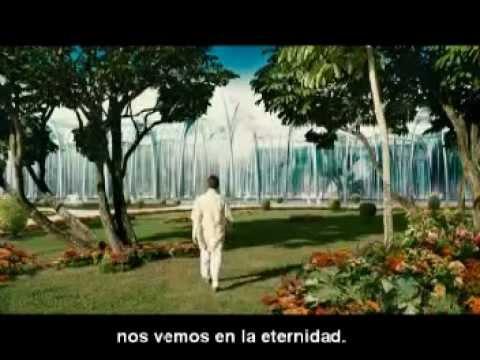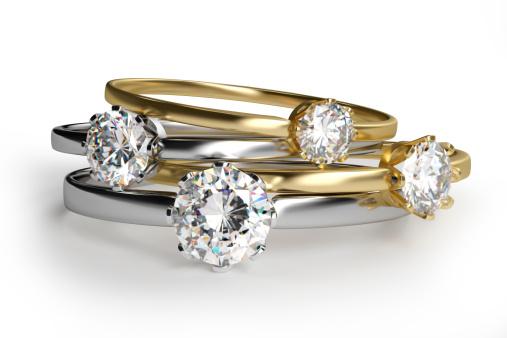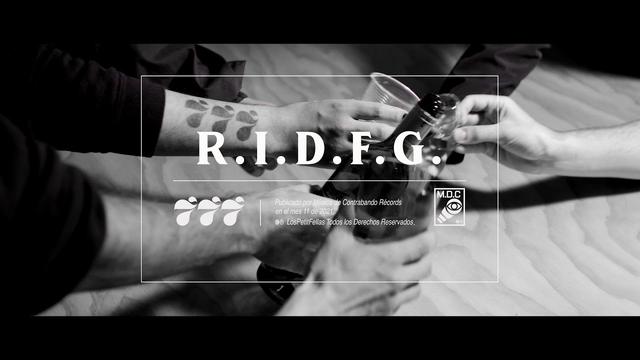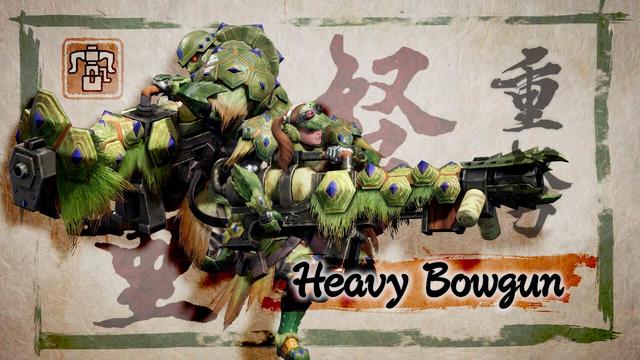The obsession of escaping from death is as old as the presence of man on Earth, which, by the way, is no longer counted by science in a million years, but in three, and it is a conservative estimate, since the most daring scientists date it from even earlier. But the fact is that the idea of death, as atheists conceive it today, as a total cessation of everything, was not conceivable for the ancient peoples, who, although they saw the body stop moving and breathing, only accepted that it died. he was left alone in the place where he was buried and that, in physical presence, as his relatives had known him, he was no longer there.
However, they did not think that this was the end of existence, but that it continued in some way, and each people and each culture imagined this continuity in their own way. The warrior peoples, for example, like the Celts and the Vikings, were convinced that there was a place, in the case of the Celts of Ireland it was the land of Tir Na Og, for those of Britain the Spiral Castle of the goddess Cerrydwen , and for the Vikings, Valhalla, where the souls of kings, warriors and heroes went, and the rest of the souls, those of peasants and slaves, well..., they stayed wandering around, and on very Noted times that used to coincide with seasonal changes returned to join the living for a brief period, which could last from one night to a week. The idea that other forms of life followed the cessation of movement and respiration was universal, and still is, and from it all the paradises, hells and areas of the Afterlife have been born, where the deceased dwells more or less peacefully, of according to their merits, and where one day they will meet their loved ones.
Archaeology has sufficiently shown how many different ways existed to prepare a deceased for his last trip, putting on his most beautiful clothes, surrounding him with his weapons, jewelry, tableware and even slaves and animals, so that he was accompanied and did not miss his most precious objects wherever it is. Paleolithic men painted the dead with red ocher because they identified this color with blood and blood with life, so it was a way of reinvigorating the deceased so that they could continue living. Who has not seen the beautiful documentary that narrates how a Chinese emperor was buried in a tomb that is now known as that of the Ten Thousand Warriors, surrounded by an army of terracotta warriors, all portraits from life? The Etruscans created a necropolis as big as a city, where each tomb was a veritable home, and contained absolutely everything needed for daily life, from jewelry to beautiful murals and elaborate cooking pots, and to such an extent they were well built and They were comfortable that for centuries also served as a home for the living who settled in them more or less surreptitiously. The Hebrews used to anoint the corpse with aromatic oils and wrap it with linen bands, but this custom was learned during the time they lived as slaves in the country where the afterlife was a high art, and the entire existence was dependent on of the last breath: Egypt.
The Egyptians were, among all the peoples of humanity, those who built a more comprehensive and complex imagery around death. They were not the first to practice mummification, but they were the ones who made it a perfect art. It can almost be said that they were born already thinking about death, and those who had the financial means to afford certain comforts, rather than build themselves a beautiful house, laid the first stone for their grave. Now we think of the pyramids as the Egyptian tombs, but before them there was another type of burial, some stepped buildings that ended in a small square, called mastabas.

For an Egyptian it was not enough for his soul to go on to live in the Hereafter: he needed to leave with his carnal envelope as well, so he had to preserve his body from decomposition. Although mummification was a common practice resorted to by anyone who wanted to achieve eternal life, it was also expensive, and those who could not afford their mummy and had to settle for being buried in the sand suffered horrors because, in this sad way, they lost the chance of a second existence. Those who have read Sinuhé the Egyptian, the wonderful novel by the Finnish writer Mika Waltari, will remember the suffering of the protagonist for having spent on prostitutes the money that his parents had saved with so much effort so that he could pay for their mummification when they died. However, the Egyptians, despite being such a religious and spiritual people, were also a trading people, so they were practical-minded and very early set fees to become a mummy, so that even a slave, if he had savings, he could get a ticket for eternity. It was so important for an Egyptian to be mummified that even the unborn were subjected to the process, especially if they were the product of aristocratic or royal lineages.
Mummification was not just an art, but a highly complex science about which little is known even today. A highly specialized staff was in charge of mummifying in an institution that, paradoxically, was called La Casa de La Vida. Doctors, surgeons, laborers, herbalists and slaves worked there. The latter lived on site full time and only came out dead. The process to “make” a mummy could take months, and it began on a stretcher, where the most important organs of the body were extracted from the corpse with special techniques that did not damage the external appearance of the deceased.
The mummifying “technician” began by removing the brain, for which he used an instrument that he inserted through the nostrils, split the septum, continued to the cranium and, with skilful maneuvers, extracted our organ piece by piece from the brain. thought. Lungs, stomach, intestines, and liver were liquefied with an injection of cedar oil and then drained, or removed through a small incision in the right flank, washed with palm wine and spices, dehydrated, bandaged, and stored in four containers called canopic jars. These glasses were not the same. The one containing the liver was in the upper part in the shape of a human head, the stomach the head of a jackal, a monkey's head that of the lungs, and a hawk's that of the intestines. The heart and kidneys were left inside the body. After washing and drying, the organs were reintroduced into the abdominal cavity of the mummy together with the stuffing mass of the body, and the canopic jars were left empty, or at least that is what the texts on mummification state, but as far as I know, this statement does not correspond to the canopes found in all the tombs, because on many occasions the viscera or remains of them have been found inside.
Thus eviscerated, the body went to another department where it was dehydrated and submerged in pools containing a solution of water and natron (the word in ancient Egyptian, a language devoid of vowels, is unpronounceable and meant divine salt, for simple potassium carbonate without much mystery), which stopped decomposition and dried the tissues, in a “curing” process similar to what is done today in tanneries, and could last from one month to 70 days, depending on the rate contracted by the interested parties or their relatives.
Once dried, the corpse was washed with palm wine and refilled with a mixture of myrrh, cinnamon, cassia of Alexandria, lichens, sawdust, sand, grain husks, linen bags filled with natron, and other objects. . In some mummies honey and propolis have been found as part of the formula.
The skin of the mummy was anointed with aromatic oils and resins, as well as other molten vegetable resins to prevent deterioration. The same mixture was used to fill the inside of the skull. The eyes and nose were sealed with beeswax mixed with resins.
At this point in the process, the mummy was passed to another department where each limb was bandaged separately, and then the entire body was bundled with the limbs attached to it. To insulate the mummy from moisture, resin was also added between the inner and outer bandages. And shrouds of fine red linen were placed on top, it is understood that only in the most expensive rates. Then the embalmers blackened the mummy for its final conservation and protection.
At some point in this process, the mummy went to a department of La casa de la vida, which today we could call beauty, where it was combed and made up and its nails were painted with gold dust. The mummies were protected with amulets that were deposited between the bandages. Scarabs representing the gods were frequent, especially Orus, who was in charge of receiving the deceased in the afterlife, imagined by the Egyptians as a kind of paradise on the banks of the Nile.
The most famous mummies are undoubtedly those of Ramses II, whose stature far exceeded that of a tall man of our days (he measures more than two meters), Seti I and, of course, that of Tut Ank Amun , the boy pharaoh whose tomb was discovered by archaeologist Howard Carter in 1922, and who has contributed to Egyptology not only its most valuable material treasures, but also invaluable knowledge about the mysterious Egyptian people.
But not only humans were subject to mummification. Animals could also receive such an honor and have access to eternal life. In the Valley of the Kings, a necropolis that contains the largest number of tombs discovered to date, innumerable mummies of cats and monkeys have been found. When the pet of an inhabitant of Egypt died, whether it was a cat, dog, monkey or another, could be subjected to this process and, in many cases, a sarcophagus was made for it or a special funeral ceremony was performed for it.
It is estimated that the first evidence of intentional mummification dates from about 3,500 years before our era. The oldest intact mummy found is about 5,400 years old and is kept in the British Museum in London. Apparently, the desert sand preserved it.
It is also worth clarifying that the mummification procedure underwent changes with the passing of time and dynasties, and that it officially came to an end when the Christians became strongholds in Alexandria, the capital. The last mummies date from the 2nd century, where the new religion prohibited such a custom. But the Egyptians could not get rid of what had been the soul of their people, and they ended up inventing the Fayum portraits, paintings that faithfully reproduced the face of the dead and that, presumably, in many cases were commissioned while the future deceased was alive. . These portraits were placed on top of the sarcophagi that contained the body and covered with a delicate veil. Afterwards, the family placed them upright against the wall of a room in the house designated for that purpose, and there they were worshiped in secret, since Christian monks censured this practice, which they considered pagan and sinful. For its part, the Egyptian people continue, even today, to pay homage to the memory of their dead, as demonstrated by the large procession of ordinary people who met on both sides of a road to venerate the passage of the caravan that led to a museum the mummies of various pharaohs.
Related article.
How much do you know about mummification in Ancient Egypt?
fny




